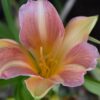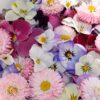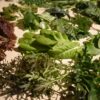Fennel (Foeniculum vulgare)
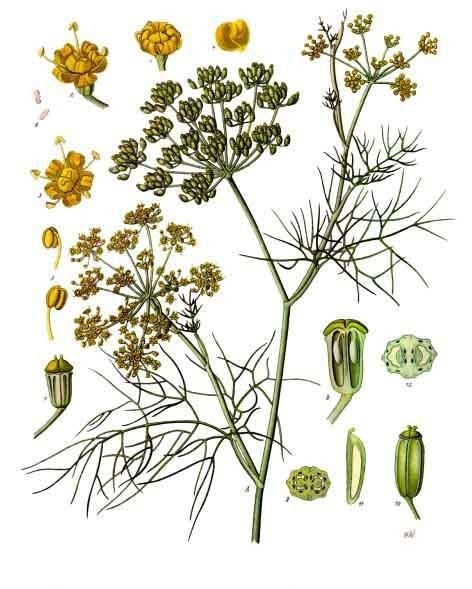
Above the lower plants it towers,
The Fennel with its yellow flowers;
And in an earlier age than ours
Was gifted with the wondrous powers
Lost vision to retore.
It gave new strength and fearless mood;
And gladiators, fierce and rude
Mingled it with their daily food;
And he who battled and subdued,
A wreath of fennel wore.
~Henry Wadsworth Longfellow–“The Goblet of Life”
One of the nine sacred herbs of Anglo-Saxons, fennel has been an important herb through the ages.
Description
This tall growing perennial (over 2m) with its blue-green feathery haze (or purple-bronze in the case of bronze fennel, F. vulgare ‘Purpureum’) makes fennel a beautiful statement plant in the garden. Large terminal umbels of yellow flowers are borne in summer followed by the narrow pale green ovoid fruit, fennel seeds. Sweet fennel, or Florence fennel, F. vulgare var. dulce syn. var. azoricum, is similar looking, but smaller (60cm), and has bulbous stalk bases which are often preferred for cooking.
| Size: |  |
2m |  |
45cm |
| Position: | 
Full sun |
|
Well-drained soil |
|
| Uses: |
|
|
 Beneficial Insects Beneficial Insects |
 Cosmetic Cosmetic |
Ideal growing conditions
A plant of wastelands and sunny, dry areas, fond of especially coastal regions, fennel is not particularly fussy with its soil conditions, but will grow best in light and well-drained soil in full sun. Moderate water needs.
Companion Planting
While some believe that you should not grow Fennel in the same garden as Dill (Anethum graveolens) as they may cross-pollinate and produce seedlings with indeterminate flavour, this has not yet proven true in my own garden. Fennel should also not be planted in close proximity to tomatoes, kohl-rabi and beans, or close to coriander as it is said to have a negative effect on their health and vigour.
Harvesting
Leaves and young stems can be picked as needed and seed collected when ripe late in summer. Bulbs are dug out in autumn.
Uses
Culinary: Every part of the plant is anise-scented and edible – roots, stems, leaves, flowers and seeds. Leaves are eaten in salads, or used as garnish, it pairs particularly well with fish dishes and olives. The bulbous stalk and leaf bases are eaten raw in salads or cooked as a vegetable. Fennel seeds are used in spice mixes and in baking. A liquorice-flavoured tea can be made from fennel leaves and seeds.
Medicinal: Fennel has been used internally to treat indigestion, colic an wind, and as a gargle for mouth sores and sore throats. Seeds can be chewed to sweeten breath and allay hunger, while a slightly warm decoction of the seeds can be used to bathe eyes to reduce inflammation and restore brightness. It is often added to cough mixtures for flavour and to help ease bronchial congestion. Combined with other herbs it is often used as a nursing aid for breastfeeding mothers.
Household: Fennel is supposedly good for deterring fleas, and as a companion plant it is attractive to beneficial insects such as hoverflies and tachinid flies which prey on garden pests.
Economic: The oil of fennel is used as a flavouring for liqueurs and the food industry, and in toothpastes, soaps and perfumes.
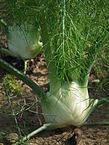
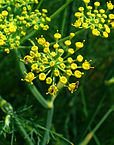
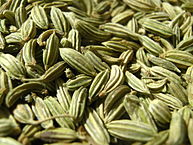

“He who sees fennel and gathers it not; is not a man, but a devil.” ~ Welsh Mydvai, 13th century.

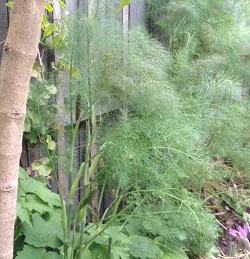
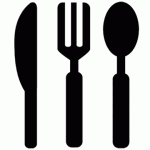 Culinary
Culinary Medicinal
Medicinal